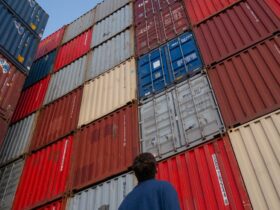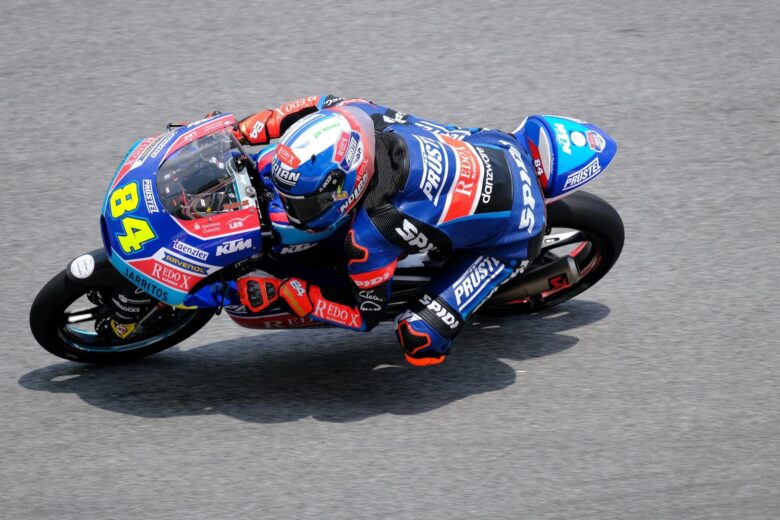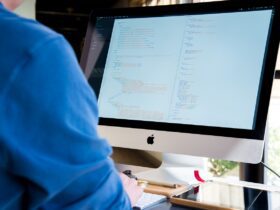The deafening roar of engines, the smell of burning rubber, and the blur of riders leaning into impossibly tight corners are the first things that spring to mind when someone mentions MotoGP. The top tier of motorcycle racing, MotoGP, creates a thrilling experience for fans and riders alike. It combines the best riders with the latest technology. Still, it is not only mechanical engineering that is at play in MotoGP because the sport is a heavy user of artificial intelligence (AI).
Precision Engineering: AI in Bike Development
MotoGP bikes are the epitome of precision engineering. Every component and feature of a MotoGP motorcycle is how it is for a reason. From the riding angle to the shape of the bike’s fairings to the individual nuts and bolts, nothing is left to chance. Indeed, AI plays a significant role in the design and manufacturing process.
The best MotoGP teams do everything possible to give their riders the best chance of victory. AI-driven simulations allow engineers to model different design choices and their impact on the machine’s performance. Before such systems, engineers had to physically build the bike, run tests, tweak specifications, test again, and so on. However, these days, those same engineers can create virtual versions of motorcycles, optimize aerodynamics, and refine the engines for optimal power delivery from a computer.
AI also comes into play on race days. MotoGP bikes are crammed full of sensors, each providing real-time data. Race engineers can analyze the data and predict if a component is failing or make minor adjustments during a pitstop to ensure the bikes are always in peak condition.
The Art of Strategy: AI in Race Planning
There is much more to success in MotoGP than building the fastest bike and putting a talented rider in its seat. The level of strategic planning that goes on before and during a race is highly sophisticated. A race has an unfathomable number of variables like track conditions, tire wear, fuel consumption, and the weather. AI systems can compile reports by calculating the outcomes of thousands of variables within seconds.
For example, a race manager can ask AI to predict the effect that asking his rider to push harder will have on tire wear and fuel consumption. It can also predict what such an action would cause to the opponent their rider is chasing down. This side of race strategy used to be guesswork, but it is now highly accurate and error-free.
AI-Powered Safety: The Guardian Angel of Riders
Riders risk their lives every time they step onto the track. They ride bikes at over 200 miles per hour and push their skills and the machine they ride to the absolute limits of their capabilities. Safety has always been a paramount concern in all motorsports, and MotoGP is no different.
Teams use predictive analytics to improve rider safety. An array of sensors on the bike and the rider’s helmet and suit can help AI anticipate potential accidents before they happen. For example, an AI system can alert the rider or even take corrective action if a rider is leaning too far into a bend or a tire begins losing traction.
Again, AI is also used to monitor riders’ health through sensors embedded in safety equipment. In the event of an accident, the pit crew can instantly see if the rider’s heart rate is elevated or their breathing rate has slowed, among many other things, which notifies the trackside medical staff. A rapid response can make all the difference to a rider in the event of a crash.
The AI-Powered Future of MotoGP
As technology and artificial intelligence improve, the possibilities for MotoGP and other motorcycle racing competitions increase. It may sound like science fiction, but the idea of fully autonomous motorcycle racing is not only possible but is a concept being actively explored. The Yamaha-developed Motobot 2.0 can ride at high speed around a track. Although the technology is some way off from being able to compete against the best riders, it is already far superior to most human riders.
Using AI in rider training is growing increasingly common. Riders already use simulators to hone their skills and memorize tracks. AI can provide personalized training for riders, such as taking a particular corner at a specific speed. The software can even throw in curveballs to keep riders thinking, like a sudden rainstorm or rapidly deteriorating tires, something that is impossible to replicate safely on the track.
Fans will also benefit through an enhanced experience. AI chatbots already help MotoGP fans buy tickets and ask for information, but it will soon be possible for those fans to engage in real-time conversations with their favorite riders and participate in virtual meet-and-greets. Furthermore, those supporters who cannot make it to the racetrack can don a virtual reality headset in their homes and experience the race from multiple angles, including from a rider’s viewpoint.
Conclusion
Artificial intelligence is revolutionizing MotoGP in dozens of ways. The sport already creates a thrilling, nail-biting experience as riders and machines hurtle along at breakneck speeds and lean into corners at unbelievable angles. AI is helping those riders and their machines to go even faster but is doing so with every safety aspect covered.
Engineers no longer have to spend countless hours and vast sums of money on developing the latest race bikes; they can build them in a virtual setting, make adjustments, and run as many tests as required.
We can expect even more groundbreaking developments in MotoGP as AI continues evolving, developments that will push the boundaries of what is possible on and off the track. Yamaha is just one of the companies plowing tons of resources into the autonymous motorcycles, with its Motobot 2.0 seemingly improving with every update. The last time it took on a real, elite-level rider, it navigated the track 30 seconds behind the legendary Valentino Rossi, so it does not look like human riders are under threat just yet. However, one day, it is possible that humans will race against robots, or we could see a MotoGP-like competition where only robotic riders compete.
































